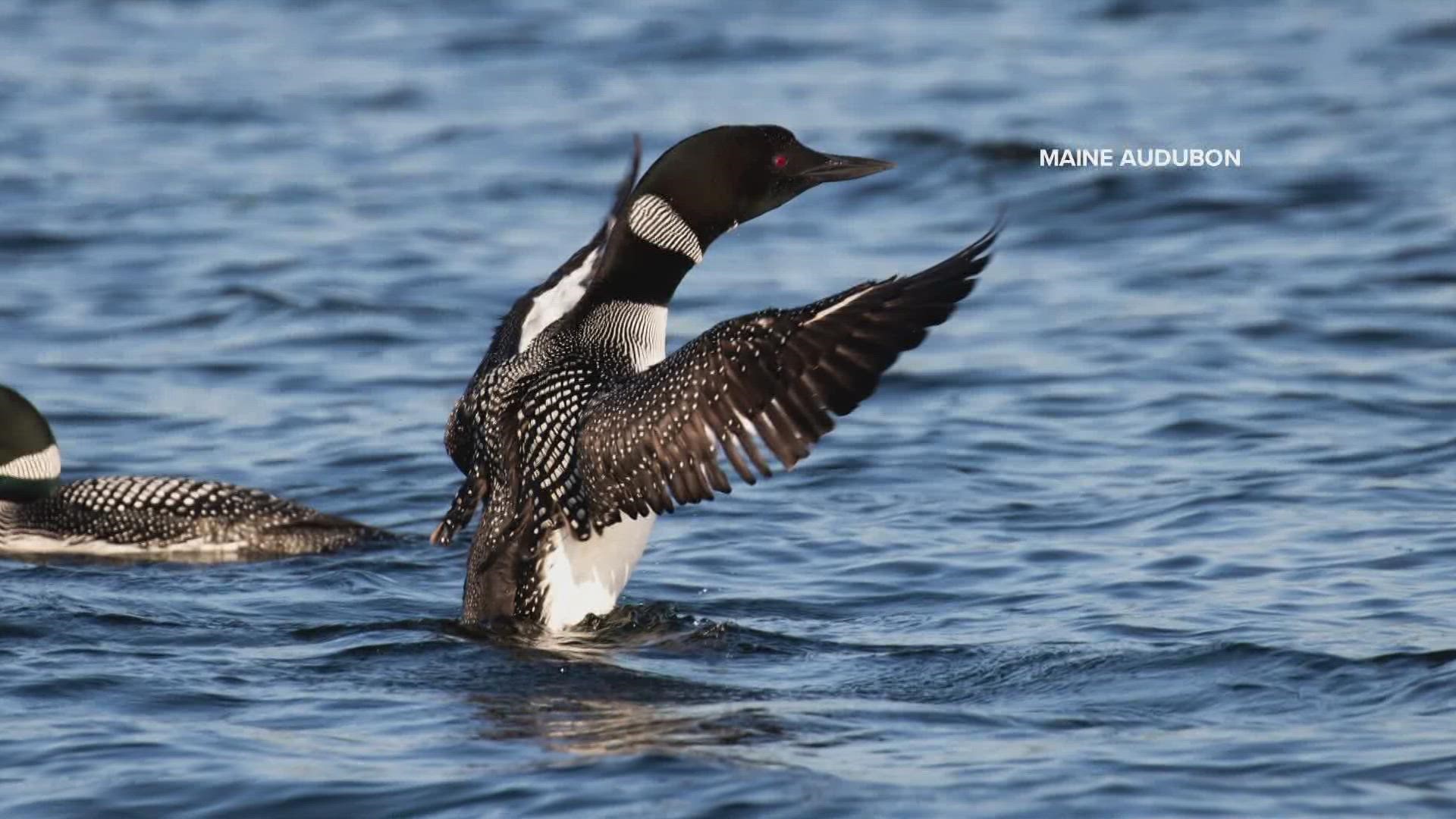FALMOUTH, Maine — Mainers are obsessed with loons.
Viewers have submitted dozens of loon videos in just the past two years, getting up before the sun or paddling out with binoculars to spot Maine’s beloved bellowing black birds with blood-red beady eyes.
Hannah Young is in charge of the annual loon count at Maine Audubon. It's a massive undertaking. About 1,600 people helped count the birds this year, she said.
The estimated of the number of loons is compiled from data collected south of the 45th parallel -- basically a line from Rangeley to Calais.
Young said they simply don’t have enough people to count all the lakes up north. Those who scoured central and southern Maine counted 3,057 adults, down from 3,446 in 2021. They found 298 chicks, up from 224 in 2021. The number of adults waned over the past year, but Young said Audubon measures health over the long term, and that trend is promising.
"One single yearly count isn’t going to tell us a whole lot," she explained. "But, if we’re doing counts over -- his will be, now, going into our 40th year – we’re able to see what’s going on with the population."
Young said state laws that prohibit the use of lead sinkers and jibs used by fishermen and others that forbid boaters from creating wakes within 200 feet of shore have helped Maine loons rebound from much lower numbers in the early 1980s, when the count began.
Danielle D’Auria is a wildlife biologist with the Maine Department of Inland Fisheries & Wildlife, dubbed a loon expert by her peers. The Audubon’s count is a welcome sight for D'Auria, as the department uses it to help shape their conservation plans each year. And loons should be a welcome sight, she said, if you own a camp.
"Their health is, really, a reflection of the health of, say, the fish or the invertebrates that the fish are eating, or even the plants that the invertebrates are eating, and so forth," she explained.
A loon on a lake means you’ve probably got a healthy lake. Not that you needed another reason to love them.

